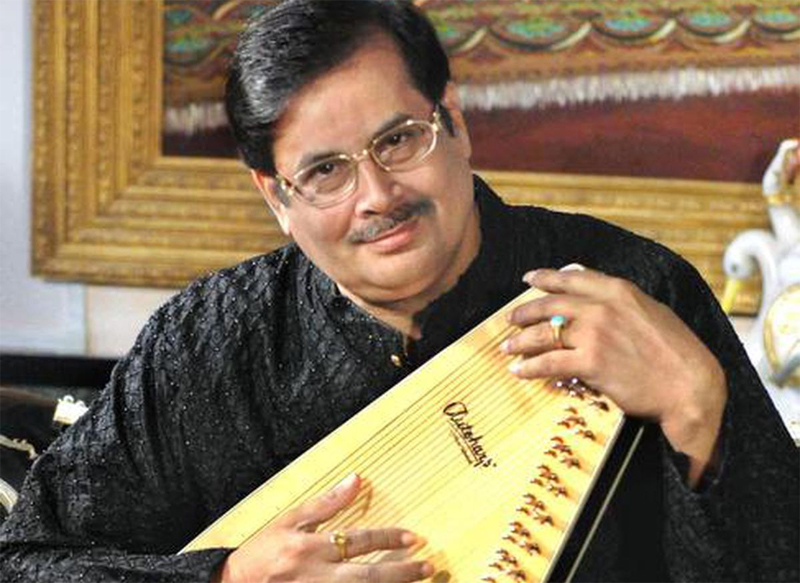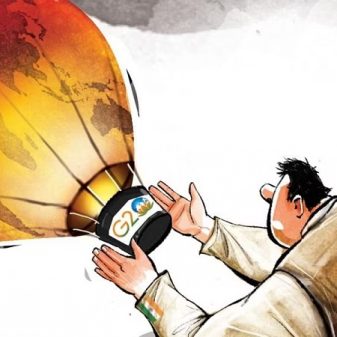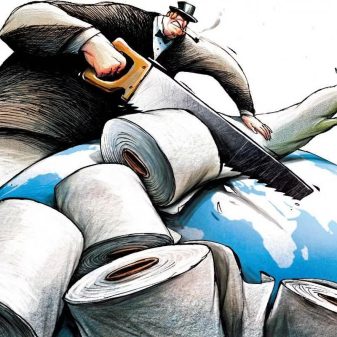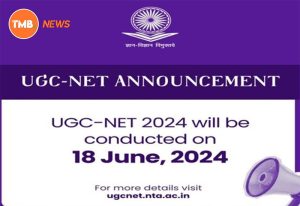
Pandit Ajoy Chakrabarty
To begin with, I feel inclined to say a few modest words that there has been a long list of great statesmen who by turns became the head of our nation adorning the seat of the Prime Minister. But none of them so far seemed to have held the post like Sh. Narendra Modi, in reference to presenting India in the global context as the best or even somewhere unique in so many different fronts and facets of demography, religion, geography, history, education, science, technology, philosophy, art and culture and so on and so forth.
The Indian subcontinent, which earlier was the undivided India, was not only known for its physical vastness but also for its intellectual and spiritual excellence. So, before one proceeds to evaluate the dimension and dynamics of Sh. Modi’s role as the leader of modern India, one has to have a basic idea as to why and where India is different from all the other countries in the world.
India invented ‘zero’ and then the number system, one of the greatest innovations in history. The decimal system, the value of pi, algebra, trigonometry, calculus, and many mathematical concepts were born in India. Sources of knowledge in ancient India are so to speak endless. To name a few, the 18 Vidyas may be quoted here – the four Vedas, the four subsidiary Vedas (Ayurveda-Medicine, Dhanurveda-Weaponry, Gandharvaveda – Music and Shilpa- Architecture), Purana, Nyaya, Mimamsa, Dharma Shashtra and Vedanga, the six auxiliary sciences, phonetics, grammar, metre, astronomy, rituals, and philosophy.
Modern science perhaps dates back to Newton’s times. But Traditional Knowledge Systems have been there since more than two million years, when homo habilisstarts making his tools and interacting with nature. Since the dawn of history, different people have contributed to different branches of science and technology, often in a manner involving interactive contacts across cultures separated by large distances. This interactive influence is becoming clearer as the vast extent of global trade and cultural migration across vast distances is being recognized by researchers.
As it is, the Indian civilization had a strong tradition of science and technology. Ancient India was a land of sages and seers as well as a land of scholars and scientists. Research has shown that from making the best steel in the world to teaching the world to count, India actively contributed to the field of science and technology centuries before modern laboratories were established. Many theories and techniques discovered by ancient Indians have created and strengthened the fundamentals of modern science and technology.
However, the vast and significant contributions made by the Indian subcontinent have been ignored. The British colonisers could never accept the fact that Indians were highly civilized even in the third millennium BCE when the British were still in the process of developing their civilization. The above is only a drop beside the vast ocean, India is in proud possession of. Sh. Modi is, therefore, wisely determined to showcase all the achievements India has already garnered from long.
Our Hon’ble Prime Minister in his ‘Mann Ki Baat’ episodes has been continuously raising multitudinous issues and events. As a result, the entire globe has come to know of and has got charmed by the excellence of India’s wonderous acts. I am personally highly impressed that while doing all this, the Prime Minister specially emphasises primarily on three things – one is evoking a sense of unity or oneness in all Indians, irrespective of their caste and creed or any other differences in their socio-economic status. Secondly, evoking a sense of pride in being an Indian; for this, Sh. Modi has raised a clarion call to his dear countrymen to gratefully recall the names of the bravehearts who fought against the British and even sacrificed their lives to get freedom from the foreign rulers. Thirdly, evoking a sense love and faith in all citizens of India towards our tricolour. He also urged that every Indian citizen and all students of schools and colleges should hoist the National Flag in all educational institutes and even at their respective houses. The clarion call for ‘Har Ghar Tiranga’ in ‘Mann kiBaat’ helped propel the campaign all around the country by evoking the spirit of Jan Bhagidari.
The Prime Minister has put utmost weightage towards flourishing all Indian indigenous efforts under the slogan ‘Make in India’. These are namely, AYUSH(traditional wealth for holistic health), National Bee Keeping and Honey Mission (fostering of sweet revolution in India), Indian indigenous toys (an Atmanirbharsuccess story), etc. I am greatly pleased to know that Sh. Modi is the first Prime Minister to acknowledge that Sh. Pingali Venkayya is the architect of the Indian National Flag. In connection with the ‘Azadi Ka Amrit Mahotsav’, now the entire nation knows about it. Venkayyaji’s grandson Ghantashala Gopikrishna called it a great honour for their family.
I am greatly impressed at Sh. Modi’s another initiative – ‘Azadi Ka Rail Gadi Aur Stations’, which was implemented during the Ministry of Railways’ Iconic Week Celebrations. In this, 75 stations and 27 spotlight trains associated with the freedom movements across the country were identified, which remained the centre of attraction for the public throughout the week. All 75 stations were decorated and various activities like broadcast of the patriotic songs and many other events were organised.
Being a great admirer of India’s diverse and vibrant culture, the Prime Minister has not only spearheaded the socio-economic development of India but under his leadership India has also witnessed a cultural revival. And ‘Mann ki Baat’ has proved to be the platform where every citizen is able to join this positive transformation of the country.
Our visionary Prime Minister has prudently marked the next 25 years as Kartavya Kaal, a period of duty for every countryman so that we all can transform this mahotsav into aJan Andolan, and thereby march forward to celebrate the centennial of India’s hard-earned independence with wider smiles on every face of the coming generations of this valiant and glorious land.
(The writer is Padma Bhushan Awardee and Indian Classical Vocalist)





